order
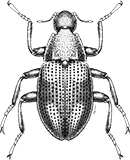
Coleoptera
“Adult Beetles”

Coleoptera
“Larval Beetles”

Diptera
“True Flies”

Ephemeroptera
“Mayflies”

Hemiptera
“True Bugs”

Lepidoptera
“Aquatic Caterpillars, Snout Moths”

Megaloptera
“Alderflies, Dobsonflies, and Fishflies”
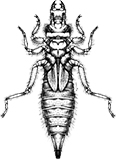
Odonata
“Dragonflies and Damselflies”

Plecoptera
“Stoneflies”

Trichoptera
“Caddisflies”
family
Blephariceridae
genus
Blepharicera
“Net-winged Midges”
Genus Overview
There are 28 species in North America. This genus is well known as a Net-Winged Midge.
Characteristics
POLLUTION TOLERANCE
Southeast: 0.2 and higher
Upper Midwest: 0 and higher
0 = least tolerant, 10 = most tolerant
FEEDING HABITS
Scraper / Grazer
MOVEMENT
Clinger
DISTRIBUTION
Widespread (east of the Rocky Mtns.)
HABITAT
Lotic-erosional
Diagnostic Characters
order
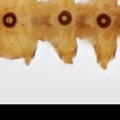
Legs Absent
family
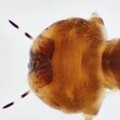
Head Capsule Complete but Not Distinct
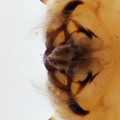
Mandibles Moving Horizontally
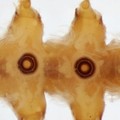
Suction Cup on Each Body Division
genus
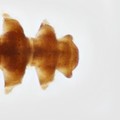
Dorsal Proleg Absent
+ Expanded Character List
Order:
Wings and wing pads absent. Eye spots sometimes visible, but compound eyes absent. Segmented legs absent, but sometimes fleshy prolegs present. Sometimes with distinct head, often without head or with head drawn deeply into thorax. Body flattened, cylindrical, or maggot-like.
Family:
head not distinctly separated from the thorax; the body is divided into six major divisions with the 1st division comprising the fused head, thorax, and 1st abdominal segment; each of the six body divisions has a median suction disc ventrally.
Genus:
4-12mm in length. Body is flattened dorsally. There are 6 segments to the insect larvae. The 1st is the head, thorax and 1st abdominal segment combined. There are suckers on each segment allowing the insect to adhere to rocks in high current.
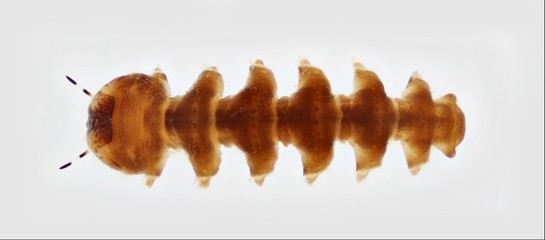
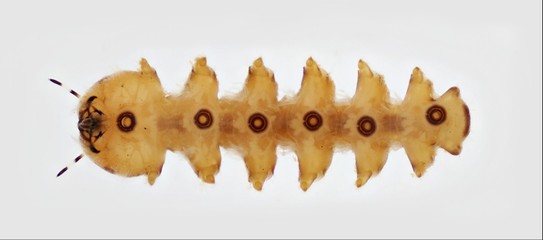
Dorsal
Ventral



